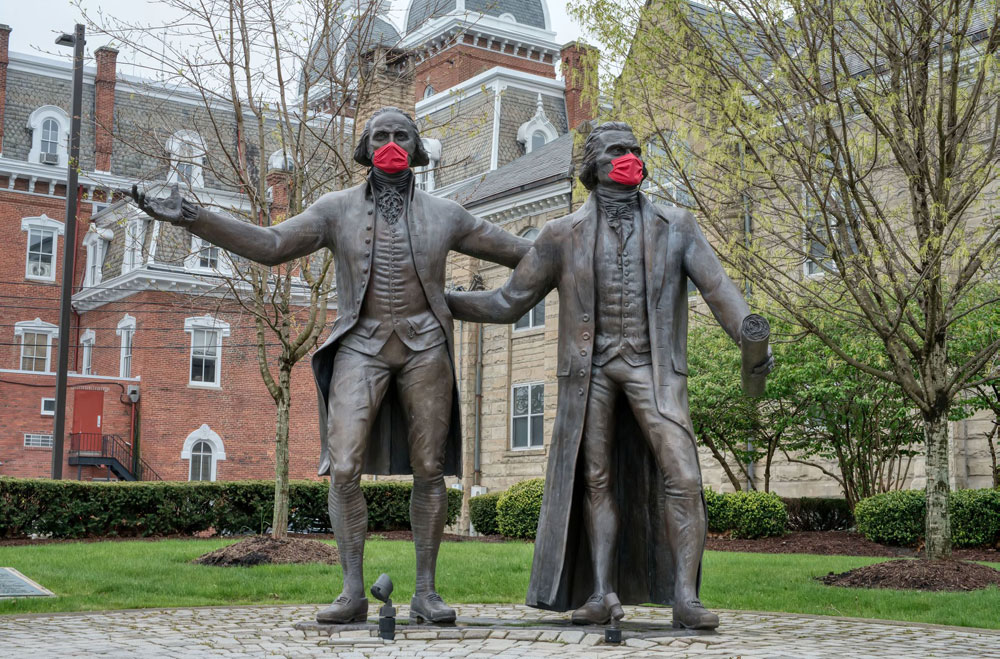
July 22, 2020; New York Times
Colleges are beginning to respond to a pandemic-induced decrease in income have begun laying off staff, including faculty. Before COVID-19, small colleges were already facing challenges. By the end of the spring semester this year, enrollment lists for some colleges were anemic, even as others reported normal fall 2020 acceptance levels. A few schools, like 174-year-old MacMurray College in Jacksonville, Illinois, which had enrolled 500, have had to shut their doors.
On the other side of small private nonprofit colleges, larger public universities face a different threat—namely, sharp budget cuts as states lose tax revenue due to the COVID-19 induced economic shutdown. In Ohio, the University of Akron made extensive cuts last week, with the board of trustees voting to lay off a fifth of the school’s union staff, including some full-time professors.
Private nonprofit universities have also announced reductions in salaries, hiring freezes, or temporary cuts to retirement benefits. Examples include Duke in North Carolina; Georgetown in Washington, DC; Northwestern in Illinois; Boston University; and Trinity College in Hartford, Connecticut.
Many of the universities are attempting to limit layoffs to non-tenured professors, part-time, and adjunct teachers. The University of Michigan in Flint laid off 41 percent of its lecturers, who are not eligible for the tenure track. In June, the private nonprofit Ohio University in Athens laid off 81 employees, with hopes of bringing some back in restructuring. The University of California, Berkeley, is using retirement incentives and faculty moves to address an anticipated pandemic-driven loss of $340 million.
On July 2, the City University of New York’s (CUNY) Professional Staff Congress, or PSC/CUNY, which is the union representing 30,000 system employees on 25 campuses, filed a lawsuit against CUNY to get back pay and benefits for any staff “who has been financially harmed by CUNY’s improper layoffs.” CUNY employs 12,000 adjuncts, 2,000 of which qualify for health insurance.
CUNY and the union had an agreement that the “chancellor will direct the colleges to make every effort” to keep adjuncts with insurance covered, “yet roughly 20 percent of insured adjuncts will lose coverage,” the union stated. The pandemic itself may cut as much, as it has been reported that approximately 38 people associated with the university system have died from COVID-19 related complications.
Sign up for our free newsletters
Subscribe to NPQ's newsletters to have our top stories delivered directly to your inbox.
By signing up, you agree to our privacy policy and terms of use, and to receive messages from NPQ and our partners.
All told, tuition income nationally could fall by as much as 15 percent, as international students, who generally pay full tuition, cannot come into the country as new students, and some may choose not to attend online. College construction projects have been paused, and the effects of a cut budget spread further into their communities.
Often, the challenges from COVID-19 have been piled on to problems that predate the pandemic. The University of Akron is a case in point. In 2018, driven by declines in enrollment, the school cut about 80 programs; since then, it has continued to reorganize, merging 11 departments into five.
“There is no doubt the university would have had to adjust our expenditures without the COVID-19 part of the equation,” Dr. Gary Miller, Akron’s president, said in an interview. But he adds that the university had assumed that it had “four or five years” to deal with its declining enrollment. Time ran out with the arrival of COVID-19.
“We don’t have a huge endowment and a huge amount of cash to get us through this,” Miller says, calling it “heartbreaking that we had to do this so fast.”
“What might happen in the next 10 years is that this school no longer exists as it is now,” says computer information systems professor John Nicholas. “It might become a branch campus at the margins for a bigger school like Ohio State University.”
How this all sorts out remains unclear, but the academic sector could look very different by the time this year’s entering students graduate with a degree.—Marian Conway













